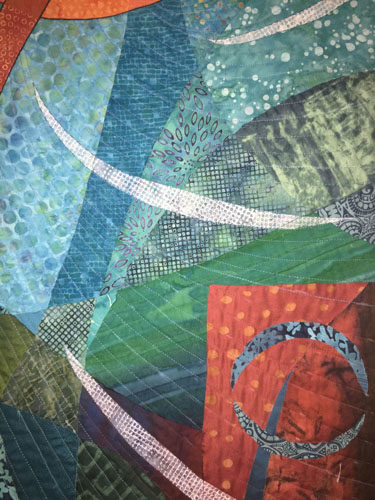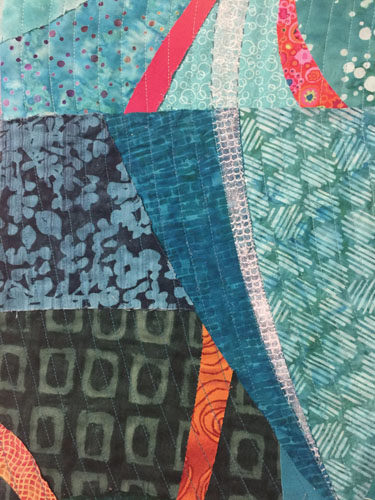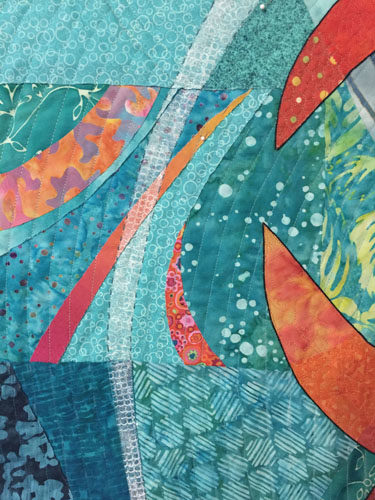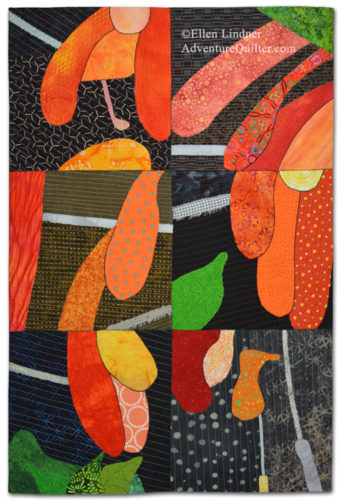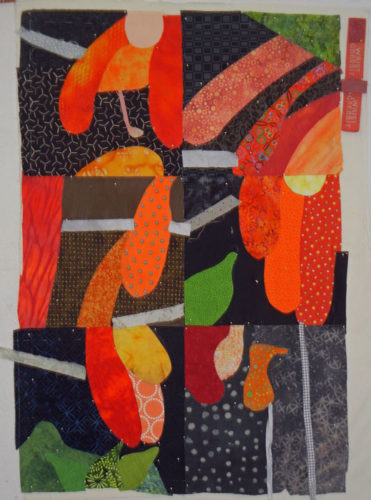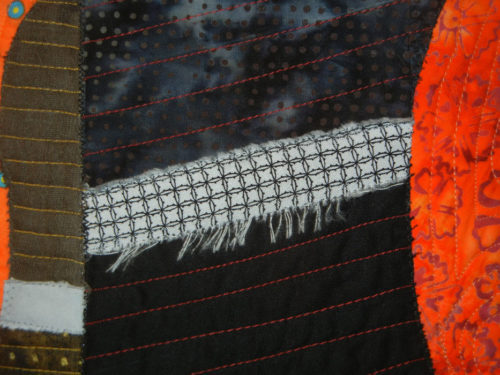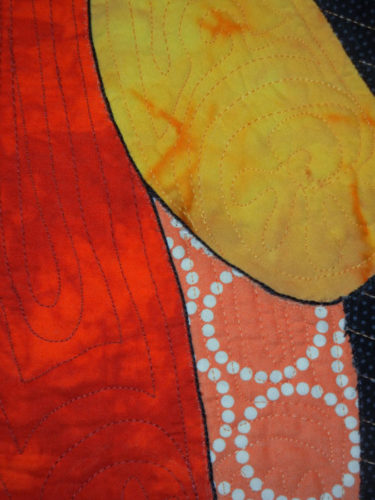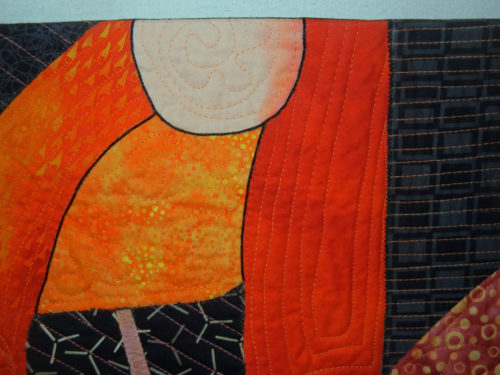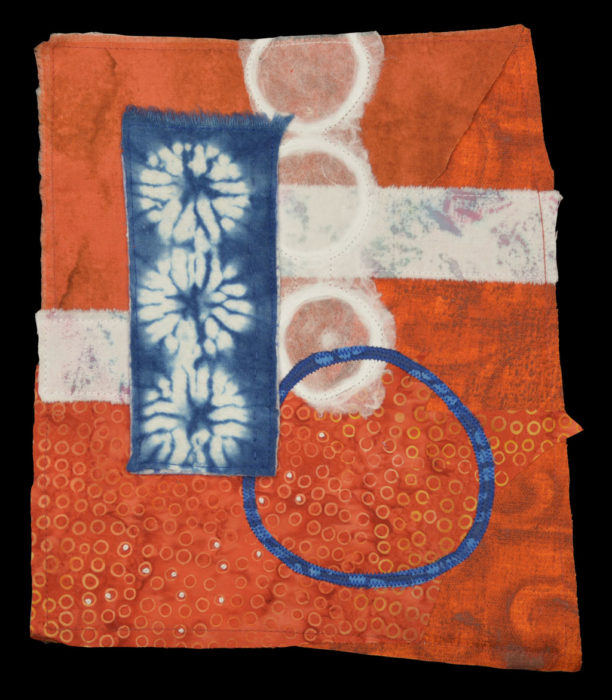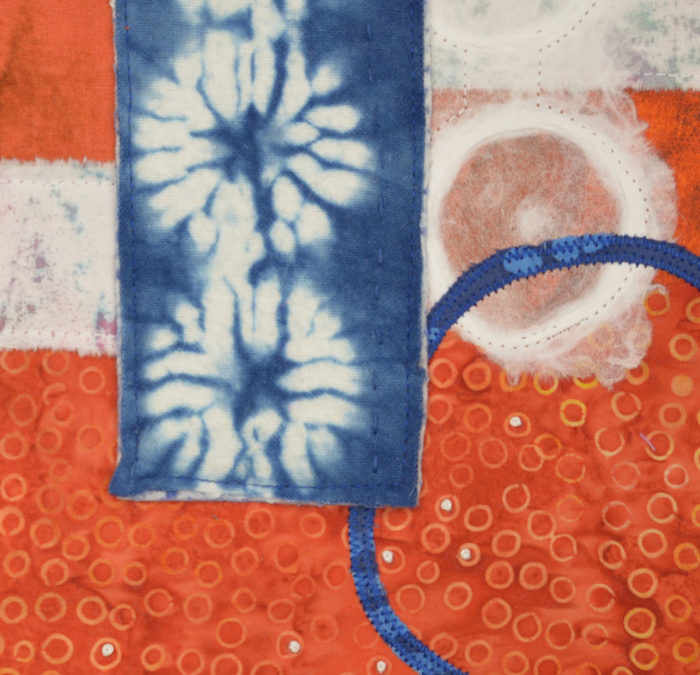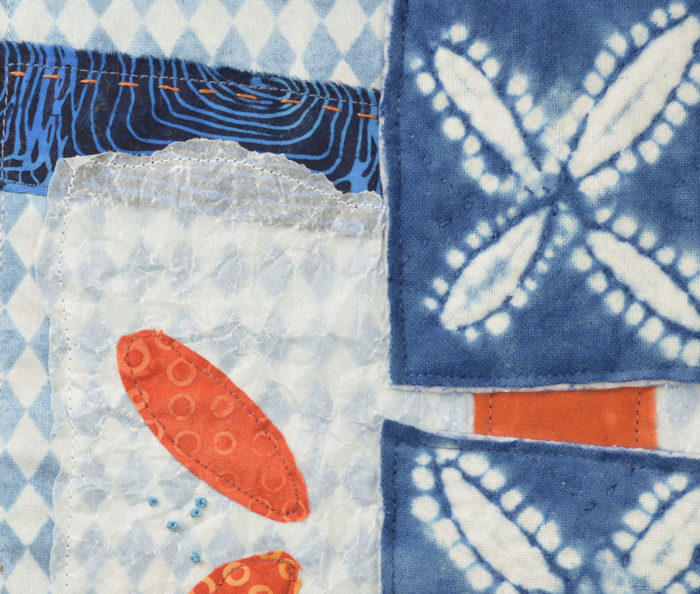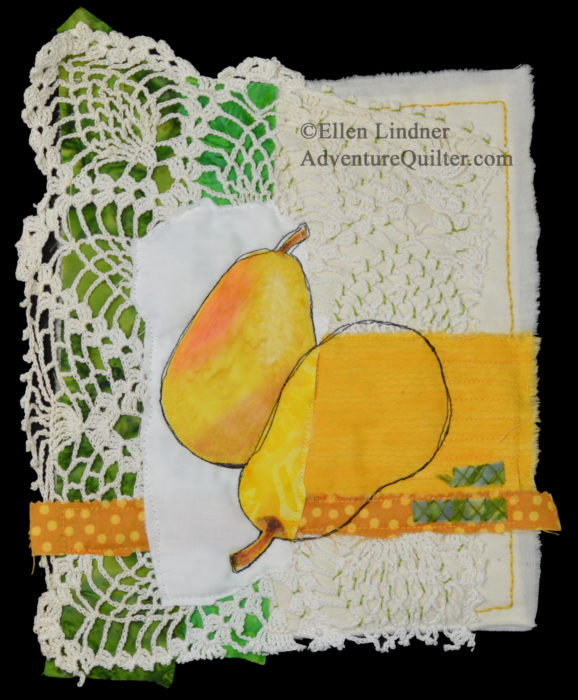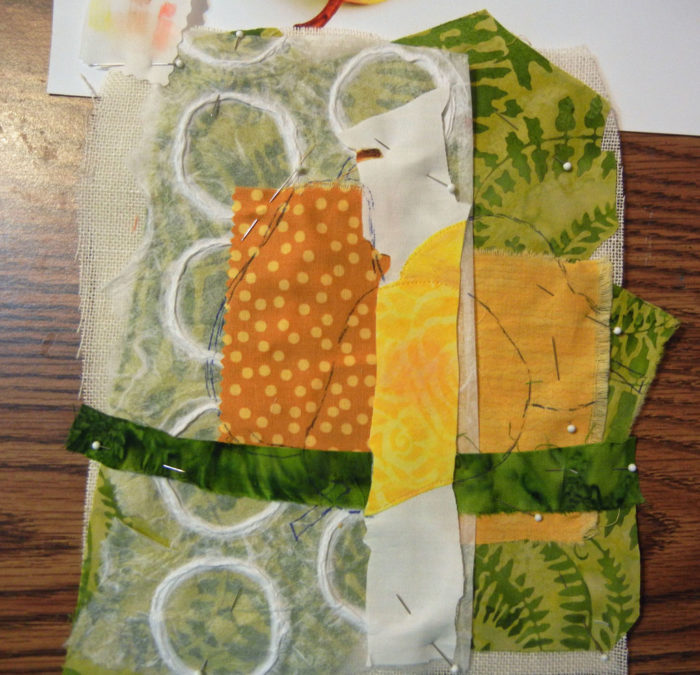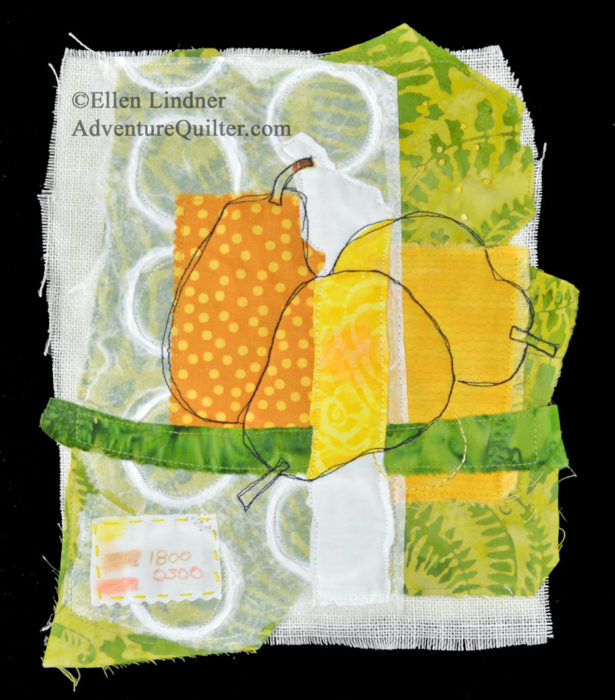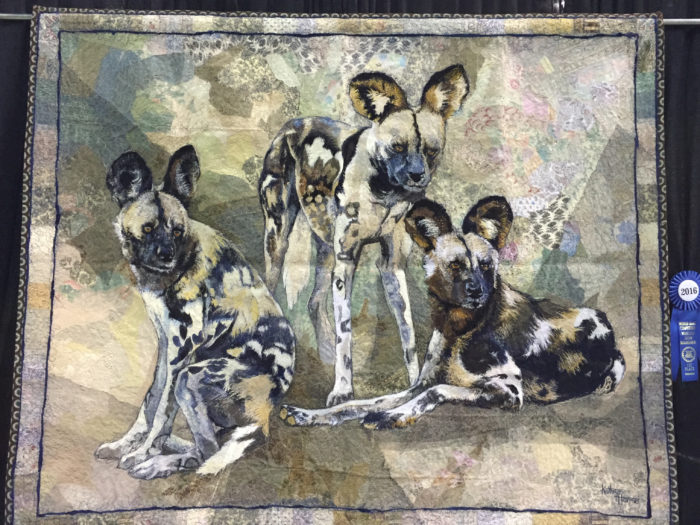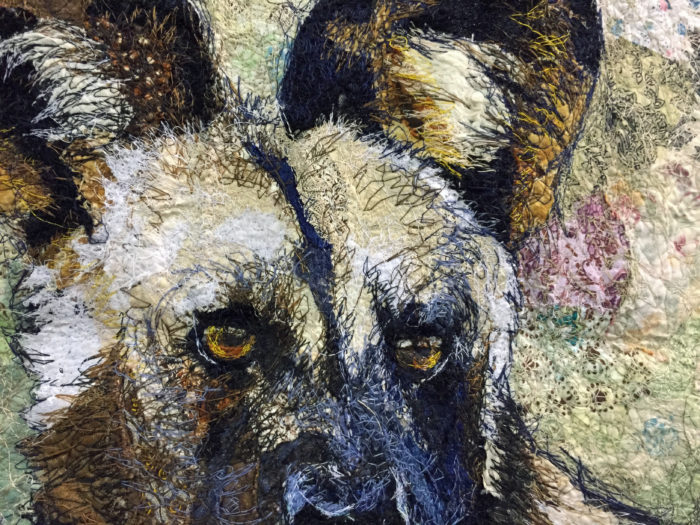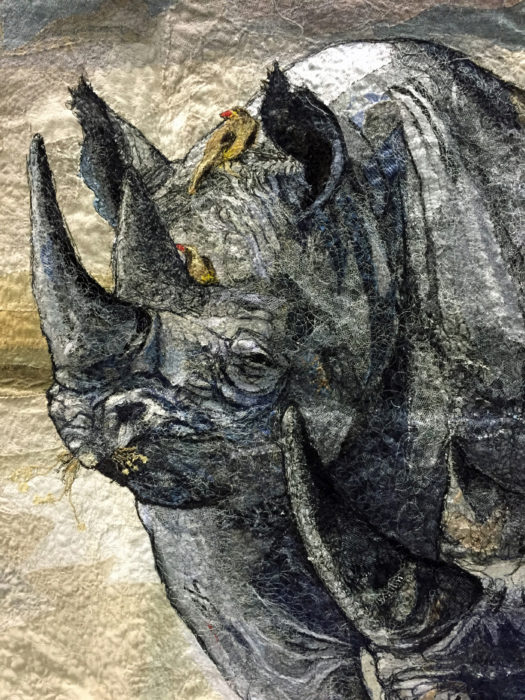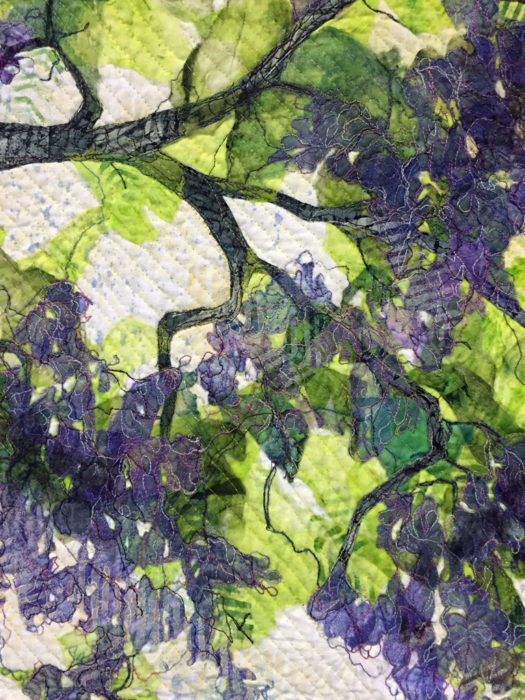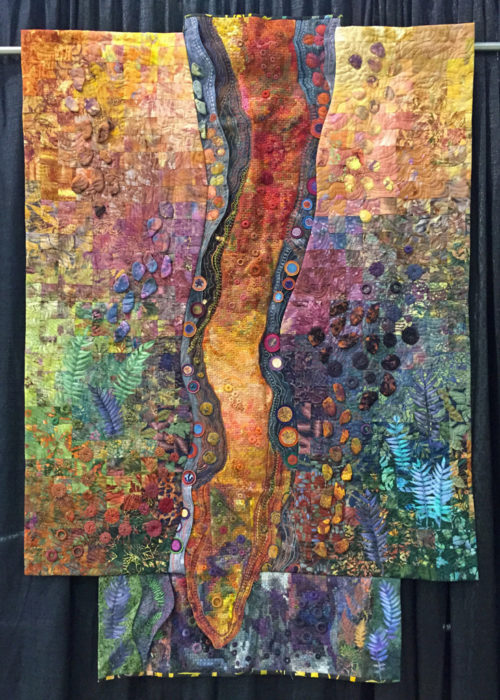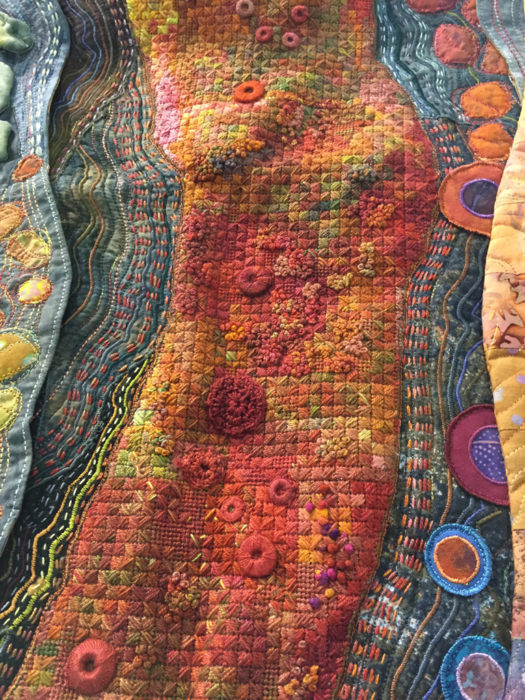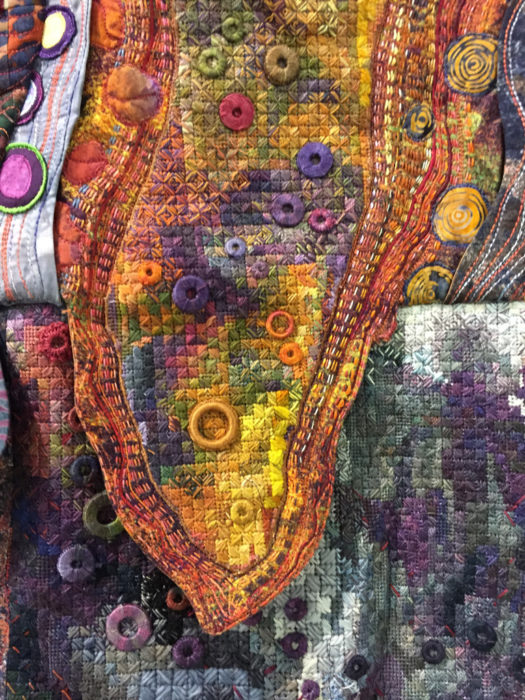Although I seldom do any hand stitching on my quilts, I like to have a hand project available for traveling, etc. I’ve searched for something that will hold my interest – for years. First I tried yo-yos. Then small collages. Finally, I decided to revisit hexies (or hexagons.)
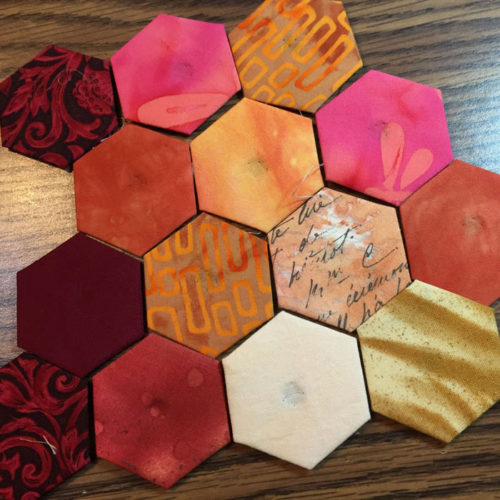
These are traditionally used in English paper piecing, something I learned WAY back when. I wasn’t sure I wanted to hand join the hexies together, but I found that I quite liked making them. And don’t they look pretty when grouped by color?
After making a few, I began to experiment with how to easiest join them. They’re created on templates of card stock /”paper,” which is generally not removed until after they’re sewn together. I wondered if there was some other way to stiffen them, so the card stock templates could be removed. I tried heavily starching them, and they had plenty of body. So, I gave it a try, appliqueing the hexies onto a plain background, and securing them with a zigzag stitch worked in invisible thread.

It worked really well, although all those passes to catch every edge took longer than I expected.
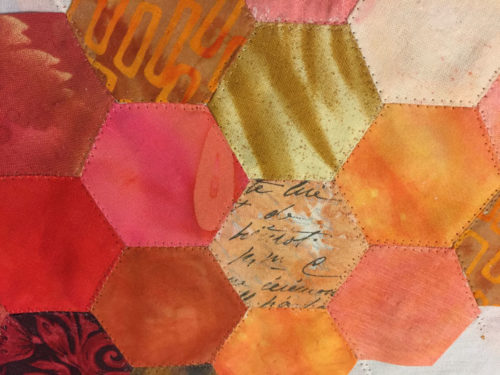
I did a lot of stopping and starting to avoid double passes with the stitching. Next time, I think I won’t worry about that and it will be much more efficient.
Eventually it occured to me that since I wanted a hand sewing project, I should at least try hand joining them.
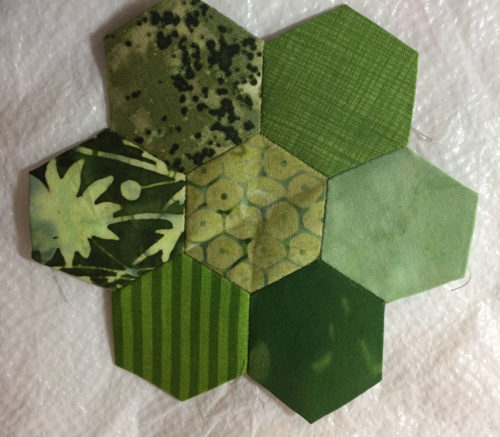
And, sure enough, it worked fine. Templates are removed only after all the surrounding seams are in place. The holes help when removing the “paper.” You just stick a chop stick or dull pencil in there and pry it out. I made my own templates and used a hole punch to make the holes.
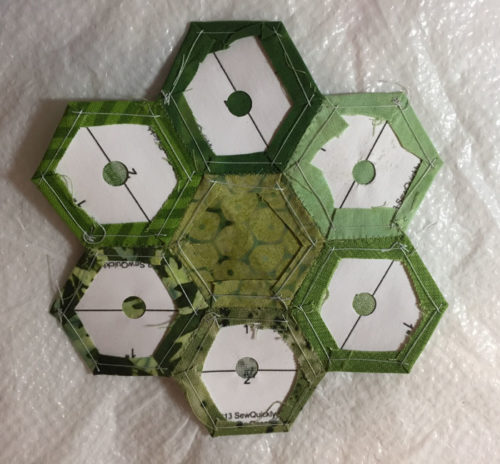
So, then I wondered if I could hand stitch them without the templates, if I starched them heavily again. I’m still working on the sample for that, and I think it’s going to work just fine.


I’m not at all sure what I’ll be doing with these. I’m pretty sure I’ll use them in coordinating colors, perhaps as a background for a future design. In the meantime, making them is a fun way to dip into my scrap collection.
This little project came in handy on a recent flight, (even though the tray table was TINY.)
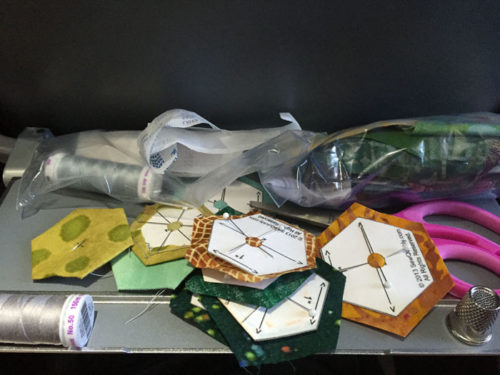
Just what I needed.
If you want to try your hand at these, here are a few tutorials and tips:
– An easy to cut template (that I used.)
– Making hexies
– Joining hexies
Ellen Lindner
P.S. I also tried making hexies from circles. The technique is easy, but I found that they weren’t very accurate, which made joining them unfeasible. They’d still work well for applique, however.







